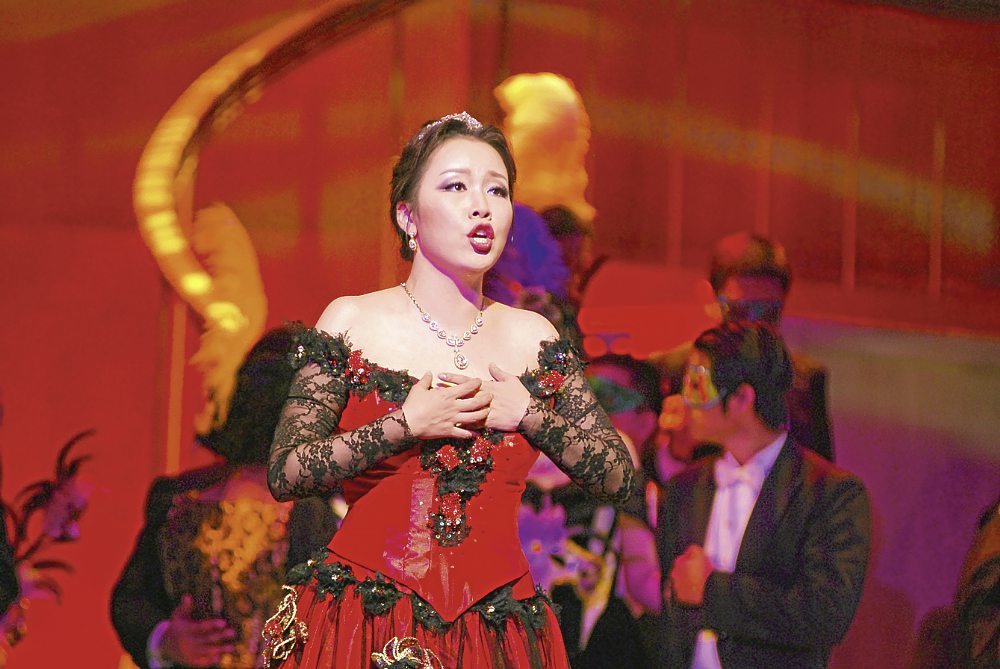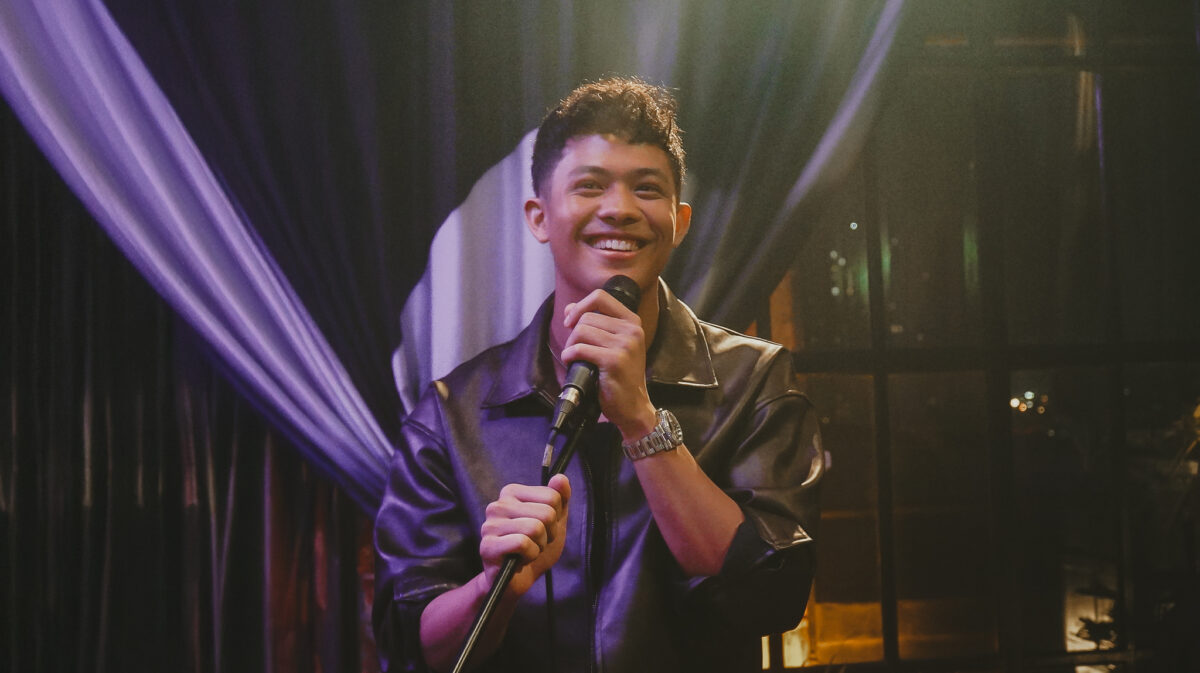
“La Traviata” was successfully staged at the Cultural Center of the Philippines (CCP) over the weekend (March 2-4), showcasing Korean and Filipino vocal talents.
The CCP collaborated with the Opera Guild Foundation of the Philippines and the Dae-Jeon Opera Company of South Korea in staging one of Guiseppe Verdi’s well-loved grand operas, in a bid to resurrect opera production that has gone scanty over the years due to logistical difficulties.
CCP president Raul Sunico said the production gave the much-needed shot in the arm to revive the dying genre. He added that the CCP would stage two operatic productions this year: Puccini’s “Madame Butterfly” and Rossini’s “Barber of Seville.”
The gala night sparkled with Korean soprano Yun-Kyoung Yi’s superb essaying of the title role of Violetta, affirming that “La Traviata” is a soprano’s opera. Its lifeblood depends on her gorgeous portrayal of her role, the epitome of eternal love expressed in the name of sacrifice.
Yi connected well with the music, which truly sustained the listeners’ interest, especially with austere visual support and, to some extent, uninspired acting. Of course, the unity of music, drama and visuals ensured full appreciation of the opera.
She was divine, truly a diva, flawless and pure as angel in both vocal as well as thespian abilities. Her vocal instrument was well-honed; her bel canto technique unfolded almost naturally, combining both lyricism and agility.
Its warmth and pearly sheen in the lower and middle registers matched the velvety sheen of her high top notes, brilliant and full, and stunning fiorituri, or running florid passages, all delivered with ease.

Well-caressed
In the opening act, she sang the contrasting arias wrapped in one, “Ah, fors’e lui” and “Sempre libera,” with aplomb, after singing duets with the tenor Jae Wook Lee, “Un di felice“ and “Libiamo,” who was not in his best element, sounding flat and unfocused.
She was ravishing in the next act, in her duet with the elderly Germont, Daesan No. Her colors were vivid, well-nuanced and subtly brushed with elan. She capped the entire section with dramatic brilliance in “Amami, Alfredo.”
Daesan’s elegant singing compensated more for his light textured voice which was not forced out to sound loud, but well-caressed. There was more line rather than volume in his singing, which was kept in the dome. His singing convincingly projected the image of a well-mannered bourgeois elderly, who pleaded, not commanded!
La Yi continued to ravish the audience, sustaining eminence through subtle coloring in her dying moment in the last act. Admirable was her mezza voce (half voice) in her duet with the tenor in “Parigi, o cara” and later in the last aria, “Addio del passato.”
She hushed her tones that still shimmered with freshness and brilliance, showing no hint of tiredness whatsoever, indicating her solid grounding on sound vocal technique.
Light but soulful

On the second night, soprano Rachelle Gerodias led the Filipino cast made up notably of tenor Arthur Espiritu and baritone Andrew Fernando.
In her own right, Gerodias essayed the role the best she could. She barely hurdled the requisites of the demanding arias in the first act.
She was generously supported by the orchestra to etch her lines effectively. The top notes were tangential indicating in the main, perhaps because of a cold start.
But in the last act, she essayed her part convincingly. The luster of her voice was finally revealed, unfolding quite naturally in a relaxed manner. Her “Addio del passato” was greeted with a hearty applause.
Espiritu was the toast of the evening. He also ravished the audience with his bel-canto honed voice: gathered in the dome, brilliant and well-kept in the passage that ensured legate lines.
Of course, his texture was light. But the lightness was well-compensated by his soulful, spontaneous rendition. No histrionic characterized his acting. His glorious singing and appropriate facial expression adequately portrayed the import of his role. He cut a presence of a professional, reliable opera performer.
He was a different Alfredo who refused to deliver his aria, “De’ miei bollenti spiriti,“ in lying-down position, and vented his anger on top of a chair in “Questa donna conoscete?“ as the tenor in the previous night did (or was made to do?).
His “Cabaletta” was glorious, capped with a rich, reverberating high C. He essayed well all the duets he sang with Gerodias.
Espiritu is for keeps. He should be engaged in the contemplated CCP third opera offering, Rossini’s “Barber of Seville.” For sure he would be a perfect Count Almaviva.
Sterling authority
Fernando sang more than adequately. His Germont was heroic rather than imploring. He sang to the hilt, consumed by the appeal of the music. He was carried with his singing by his complete rapport with the orchestra in the first strophe of his aria “Die provenza,” which elicited hearty applause at the end.
At the pit was conductor Jae Joon Lee, leading the Philippine Philharmonic Orchestra. He wielded the baton with sterling authority, showing his keen understanding of the score. Undoubtedly, he knew his métier.
Director Floy Quintos, with Paul Morales (choreographer); John Batalla (light design); Ricardo Cruz and Patdat-Oistat (set design); and Eric Pineda (costumes), pooled their talents for the successful staging. Their collaboration must be commended for ensuring a memorable staging of “La Traviata,” despite the limited budget.
Fidel Calalang’s University of Santo Tomas (UST) Singers, Ballet Philippines and the voice faculty and students from UST lent their support, as well.
Long live the opera!












































